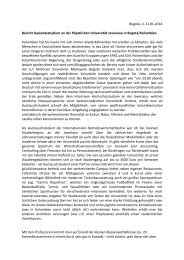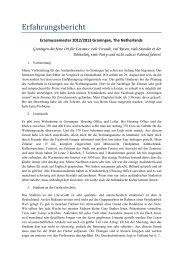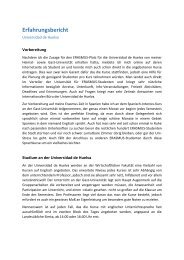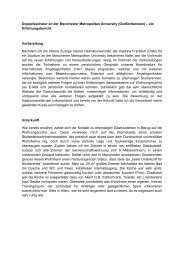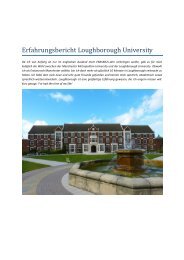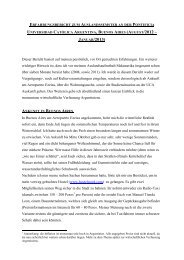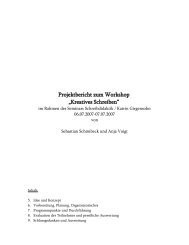Dariusz Aleksandrowicz Aleksandrowicz - Europa-Universität ...
Dariusz Aleksandrowicz Aleksandrowicz - Europa-Universität ...
Dariusz Aleksandrowicz Aleksandrowicz - Europa-Universität ...
You also want an ePaper? Increase the reach of your titles
YUMPU automatically turns print PDFs into web optimized ePapers that Google loves.
D. <strong>Aleksandrowicz</strong>: The Socialist City and its Transformation 3<br />
spatial order represented by the city as well as from the specific visual experience<br />
permanently offered in it.<br />
In the history of Communism and its ideology, however, the historicist metaphysics<br />
which originally formed the core of the respective ideas was gradually dwarfed by<br />
interpretations suggested by a more pragmatic assessment of problems in the light of<br />
realpolitik. 4 Although the crucial notions such as “Communism,” which referred to<br />
the desired model of society, still could not be understood without taking into account<br />
the revolutionary eschatology they were originally rooted in, they at the same<br />
time acquired a more practical and concrete meaning. It was most of all Stalinism<br />
that succeeded in pushing the idea and the practice of Communism away from the<br />
purely abstract notions once developed in Marxism. The chief invention of Stalinism<br />
was in this respect to establish “industrialization” as a secular equivalent of the<br />
metaphysical idea of “emergence of Communism.”<br />
Industrialization and creation and/or further development of the working class were<br />
therefore the major “practical” objectives to which the socialist cities owed its existence.<br />
Since we can speak about both “industrialization” and “working class” also<br />
with regard to the Western society, it is important to note the specific “socialist”<br />
meaning of these terms due to the specific features of the reality to which they refer.<br />
“Industrialization” here chiefly means the construction of production plants (especially<br />
in the domain of heavy industry). The function of these plants was to employ<br />
people and to produce things according to directives resulting from the politicallydefined<br />
production plan. Apart from some physical or even technological similarity,<br />
the socialist “production plant” had little in common with the “enterprise” in the<br />
economic sense of the word. Correspondingly, the socialist working class, unlike the<br />
class of employees in a Western society, owed its very existence not to the economic<br />
process, and its position was not determined by what was taking place on the market.<br />
More significant was its relation to the socialist state. It was exactly the socialist<br />
state and not the market that created and secured the place of work, determined the<br />
conditions of work and of life, and defined the system of duties and privileges for the<br />
members of the working class. 5<br />
II. Specific features of a socialist city<br />
Socialist cities or settlements of the Stalinist period and those of the later decades<br />
differ architectonically from each other. The first of them were usually built in a<br />
socialist “neo-classical” style with socialist “baroque” elements added to it,<br />
whereas the simplistic architecture of the latter was determined by technology of the<br />
pre-cast panels. What they have in common is, however, an egalitarian, anti-<br />
4 For more cf. <strong>Aleksandrowicz</strong> (1989).<br />
5 For more cf. <strong>Aleksandrowicz</strong> (1993a; 1998a)



